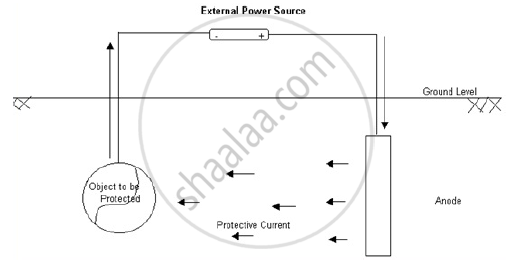Advertisements
Advertisements
प्रश्न
Explain impressed current cathodic protection with the applications.
उत्तर
Impressed Current Cathodic Protection
In this method, a current is applied in the opposite direction to that of the corrosion current there by nullifying its effect on the base metal i.e. converting the base metal to cathode from anode. The impressed current is obtained by using a D.C. source such as a wet battery or a dry cell along with an insoluble anode such as platinum, stainless steel, graphite etc. which is embedded underground and to this, impressed current is applied. The whole assembly is connected to the metallic structure to be protected. The anode can be single fora small structure like water tank or there can be many series connected such anodes if the structure to be protected is big like long pipeline, oil-rig platforms on the sea etc. The insoluble anode is kept inside back-fill made up of mostly gypsum which increases the electrical contact with the soil.

Advantages:
This method can protect very large and long structures. Further its maintenance is easy.
Disadvantage:
The anode needs frequent replacement.
Applications:
Protection from soil corrosion of underground pipelines, cables, protection from seawater corrosion of cables ship bulls, piers.
